This sounds like it could be a partial obstruction in her gut. That’s something I’d consider emergent. Please get her to the vet.
Got this 3-4 week kitten who needed a home and appears to have a twisted/angular wrist. He was most likely born with this deformity since I don’t believe his legs cause him any pain. He is starting to walk and it is becoming a bit of a struggle.
Can someone recommend me any options? I don’t want to go to the Vet just now because i know it will end being costly with X-rays and such. Right now i’m considering splinting, but I also want to know other options like maybe messages, etc. He is doing pretty well, but since he does sometimes walk, supporting his leg on the leg twisted (the bone, rather than his paw), i’m afraid it’ll become a future problem when he’s older.
Comments
Hi. I have an almost 6 year old lab who keeps vomiting when she eats or drinks. She is otherwise happy and doesn’t appear to be in any pain but does appear to be losing weight (she’s a heavier build). She wants to keep eating and drinking though and not having any other problems. Is there something I can give her to resolve the stomach issue or could it be something more serious?
Comments
This is a lot to digest. We have a 15-year-old dog that has been on meds for congestive heart failure. He was doing fine until…the other day he apparently got into the trash and ingested a paper towel with meat gravy. For the past 24 hours he has been vomiting up food he ate after the ingestion so we obviously have not fed him further. He has been drinking water regularly throughout the day and night but vomiting it up at times as well. I have discontinued giving him water so the vomiting doesn’t dehydrate him. He did vomit up part of the paper towel but now we believe there may be a piece in his digestive tract too. He is resting now but has been very lethargic as one might expect. Not interested in eating, vomit is a combination of yellow and clear. One earlier vomit was very brown and “pudding” consistency. Since then mostly watery. Our vet is in surgery and is unavailable for the entire day, The main question is how dangerous is the paper towel if in fact it is lodged in the digestive tract? Will it degrade fast enough to allow water first and then food to pass. Our vet said the dog’s age and heart condition preclude any surgery. We are at a loss as to what, if any steps are available to us. He is not in immediate distress but is clearly in need of something.
Comments
Good morning, I’m looking to get a 2nd opinion as to which flea and tick preventative is safest for a dog with history of seizures (5 year old golden doodle with 3 random seizures in the past year and a half.) My current Vet said NexGard is safe although, the online information states it is an “isoxazoline class drug “and caution should be used in dogs with a history of seizures or neurological disorders Anv guidance would be greatly appreciated.
Comments
Hello all,
I posted on here earlier this year asking for some advice about my cat who had a very advanced cryptococcosis infection.
Her right lymph node (submandibular) was swollen the entire time, and the left one but to a lesser degree.
She developed anisocoria and horners syndrome, droopy right eye, and she had a mass that felt like bone on top of her eye.
The anisocoria disappeared after 3 days and her pupils were entirely normal again.
Things escalated last week. Her nose has always been blocked, to various degrees, since she developed the symptoms, 1.5 years ago, but it seemed like she was able to get enough air in with some gasping and mouth breathing. I didn’t know how comfortable she was, but I had to try the last recommendation the vet suggested: 150mg of fluconazole a day. She was on this massive dose for 3 months. (4 kg cat)
Previously, she was on 37.5mg for 6 months, her nose and lesions cleared up and she was able to breathe again (most importantly!)
But, in March, a big lump (cryptococcosis mass) exploded into an abscess. It wouldn’t heal. The vet performed surgery to remove it and other lesions nearby. It was an eyesore, I felt so bad for her. She had a cone on for nearly 3 weeks because the suture area got a bit infected. Raised her fluconazole dose to 75mg a day.
Last week, her nose got much more inflamed and distorted very rapidly. It began bleeding and ulcerating, drying up and then bleeding repeatedly.
She looked so uncomfortable and basically slept all day in various positions to keep her head elevated. When near me or when sleeping with me at night, she’d clamp onto my arm or neck with her teeth to keep her mouth open so she could breathe and fall asleep. I can’t fathom how difficult it was to sleep having to make a conscious effort to get air in through her mouth. I understand cats are not “mouth breathers” and can’t fully relax that way.
I took her in to see her vet, 11 days ago, after noticing blood on her paw, and no wound. The vet looked inside her mouth and looked said the fungus was pushing through her soft palate (roof of mouth) into her front teeth. She recommended euthanasia and said she was not going to “get better” in her professional opinion. And that my cat was suffering and it wasn’t ok, I asked outright if her quality of life was ok. She said no. My cat had lost 1 kg since her last visit. This also factored into the vet’s recommendation.
The vet was ready to put my cat to sleep at the time of our consult, but I requested some time to digest and take her home to say goodbye.
Then, 4 days later, I took her in for euthanasia. I wish I had canceled. Am I wrong to feel that she should have died on her own terms?
What she had was like a breathing disability, in other ways she was a strong and vital cat. She was still eating, though appetite decrease by 30 or 40%.
Why did her nose not clear up (while the cutaneous lesions cleared) and in fact get worse after 3 months on a higher dose?
I’m so devastated and confused and wish I could have done more to save her life.
I felt selfish for letting her live this way, knowing there was no hope and I’d just be prolonging the inevitable (probably suffocation).
I am in so much pain recollecting what’s happened.
I wish I had kept her at home and only taken for euthanasia if she had collapsed and refused to eat. Taking her in to have her put down when she still asked to be fed, showed playfulness in some moments, trotting around when it was food time, it felt hasty but also inevitable. I felt I was saving her from experiencing more suffering as the fungus grew.
But, I will never know how it would have gone if I left her. Maybe nature would have performed a miracle, and she would heal, or she would die without my intervention and without pain (like a quick heart attack). I feel so terrible for having made the choice to snuff out her little life when she was still very strong.
She fought the sedative the vet gave, they took her back to insert a catheter and didn’t bring her to me until 40 mins later, saying she was fighting the sedative.
It pains my heart thinking she was in terror during her last hour on earth. When they carried her in, sedated, she looked absolutely petrified and braced. I could see her spirit fighting with all its might.
The vet told me that she had a more thorough examination of her nose and that the masses had hardened/were like concrete all through her nasal airway and that she was breathing through a “pin prick” hole. She said she was never more certain that euthanasia was the right choice.
I am so heartbroken. I still feel like I took her life away too early. Why should it be up to me? I can barely trust myself now.
Comments
Almost 2-yr-old pomeranian. Broke her leg 9 days ago. Has been splinted twice (she got the 1st one off).
Vets are pushing surgery. We’ve already put almost $3k into her treatment. Surgery estimate is up to $10k which is way above doable, even with CareCredit.
We want to do what is best for her. My question is – what is the chance she can heal properly without surgery. When do we decide if she is definitely not healing properly ?
Current xrays are uploaded.
Thank you for any advice !
My border collie 2 years old recently started staring at shadows. She will just sit and stare for hours. When the light moves and the shadow is in a different spot she will move with it. What could be going on? I can’t get her to play or cuddle or anything once she starts staring.
I took her to the vet for bloodwork and everything came back normal.
Comments
What products, if any, can you recommend for a dog that is urine marking in the house.
A little background which I think is important.. My grandson adopted 2 dogs a couple of years ago from Tall Tails Rescue about a year apart. They were both very shy with strangers (almost fearful) but have come around somewhat. Back in May my grandson had to move back home and lives in the lower level of the house. Leo and Diesel have adapted well thanks to my daughter who has gotten them into a routine. However, Diesel is urine marking in the house. Right now there is only one recliner downstairs because Diesel chewed the sofa down to the frame. He has also chewed blankets and an area of her wood molding.
I guess I should mention that he is a hound dog (not sure if pure bred) and he is neutered. He has been checked by a vet and there does not appear be anything wrong with him physically. Not sure if this is important but both dogs are by themselves for a good part of the day. My granddaughter lets them out at lunch time before going to college.
Diesel obviously has a behavior problem and probably needs professional help which they cannot afford at this time.
In the interim do you have any suggestions?
Are any of the otc products effective (either plug-ins, supplements, etc.)?
Thank you
Comments
Hello! I was listening to a lecture on animal nutrition, and it brought up the topic of grain-free diets. I used to feed my dogs the blue wilderness grain free diet. But is grain free safe for my dog? Should my dogs have grain in their diet? They are currently eating team dog and that has grains in it. Thank you!
Comments
My dogs eye keeps getting gooped shut. I’ve had many dog in my life and never seen this, reminds my of pink eye in people but his eyes aren’t pink. I’m going to call the vet tomorrow I thought it was maybe allergies at first with the weather changing but now I’m thinking it’s something more…. Anybody have any ideas?














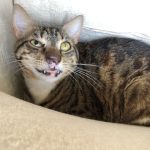


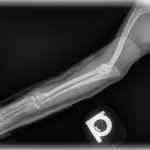
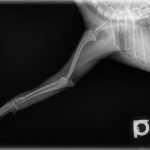
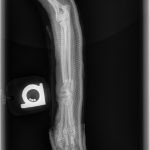


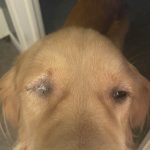
Hello.
If you follow my blog at kmdvm.blogspot.com I have a few articles on this. I would use a soft splint and rest. These kittens grow and the legs strengthen and they can have normal lives. If you are anywhere near me in northern Maryland I will help.